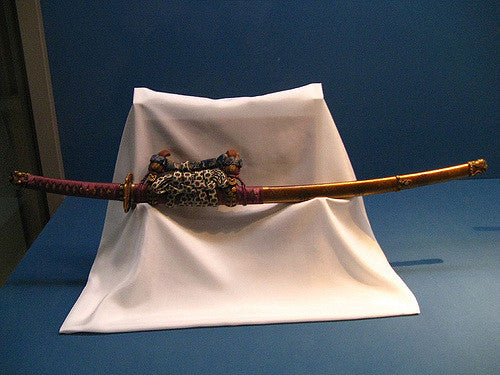Votre panier est vide


From the wakizashi to the katana, some of the world's finest quality swords have originated in feudal Japan. Traditional Japanese swordsmiths used a variety of materials and techniques to craft these weapons, some of which are still being used today. But did you know the following facts about this ancient craft?
#1) Japanese Swords are Decorated
Nearly all swords produced in feudal Japan are decorated. Swordsmiths would carve intricate designs such as flowers or animals into the blade using a file. Other designs, however, would consist of a grid of marks (known as higaki). These decorations didn't serve any functional purpose; rather, they were strictly aesthetic and for visual purposes only.
#2) Some Japanese Swords Featured Grooves
Not all markings on Japanese swords were strictly aesthetic, however. Non-decorative "grooves," for instance, were used to reduce the weight of a sword while also preserving its strength and structural stability. A small groove or indention running the length of the sword reduced the blade's weight, allowing for faster draw times and greater mobility.
#3) High-Carbon Steel was Used
Swordsmiths in feudal Japan perfected the art of crafting swords using high-carbon steel. Prior to the invention of tamahagane, swordsmiths were restricted to using traditional low-carbon steel. While still a better choice of material than iron, low-carbon steel swords had a tendency to break or chip upon impact. Japanese swordsmiths discovered that using a higher content of carbon allowed for a superior level of strength and durability. Even today, most high-quality swords are made of high-carbon steel such as this.
#4) Japanese Swordmaking was Done at Night
Traditional Japanese swordmaking was typically done at night. While this limited the swordsmith's visibility, it offered a few key benefits: first, forging a sword at night offered cooler temperatures, creating a more comfortable environment for the swordsmith.
Secondly, it allowed the swordsmith to better see the color of the sword as it was heated. Under the darkness of night, swordsmiths could gauge the sword's temperature more easily by looking at its color; thus, allowing for stronger, higher quality swords.
#5) Swords Were Folded Dozens of Times
Crafting a traditional Japanese sword was a painstakingly difficult and time-consuming process that involved folding the blade dozens of times. This folding actually served several purposes: it allowed for differential hardening; it reduced impurities in the metal; it spread the carbon and other metals throughout the blade; and it decarburized the surface.